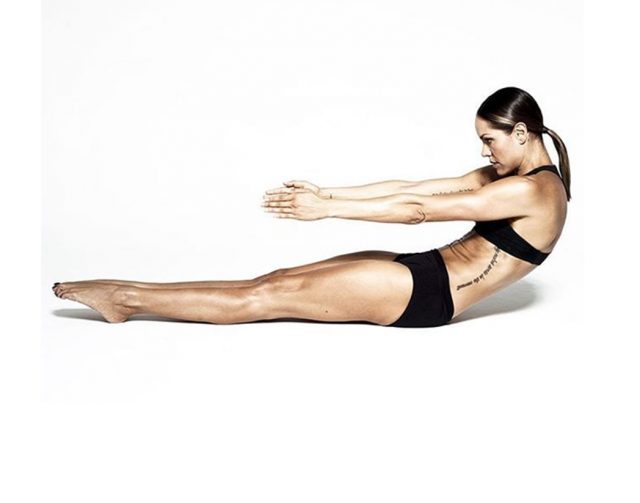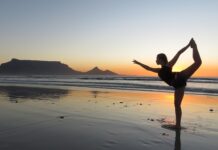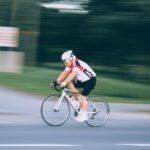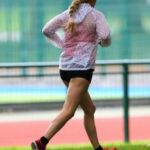Pilates is a type of exercise created and designed with the aim of balancing, strengthening and stretching the entire body. Its goal is to achieve the restoration on a personal level of those who practice it, through the correct connection between the mind and the body. Performing specific exercises, repetitively over time, accompanied by the correct breathing patterns, has proven to be an effective way of maintaining physical fitness and a complement to the practice of other sports, as well as physical rehabilitation of any type.

It is an exercise in which oxygen is not required, but in which breathing is essential, it is essential to take in air through the nose and not through the mouth, while keeping the abdomen contracted, as this is how the muscles are properly oxygenated. In addition to a good concentration, to be able to carry out the movements properly.
It has multiple benefits; it reduces tensions, which helps to be balanced on a physical and mental level. During the performance of Pilates, a certain elasticity and hardness is demanded, especially in the abdomen and lumbar area. Those who practice Pilates walk more upright, without slouching.
To practice this method, it is not necessary to attend a specialized center, that is only an option, since it requires little material, and it can be done at home.
Pilates improves the way the body looks, feels and acts. It improves flexibility, agility, relieving back pain, among other diseases. It teaches the person to know their body better, maintain better body posture and achieve an easier and more elegant movement when walking, as it optimizes the silhouette and improves the balance of muscular asymmetries.
It has other multiple benefits such as promoting respiratory control and circulatory function, increases metabolism, improves bone density and muscle tone, in order to calm nerves and tension, as well as stay focused.
Professional athletes usually do it to avoid injuries, improve and increase their strength and flexibility.
Pilates exercises.
Roll up
It is an easy and simple type of exercise, with it the abdominals are worked, which is mobilized, mainly, during trunk flexion, so that the legs remain stretched and attached to the ground, thus achieving adequate mobility and stability. The muscles of the legs and shoulders are also worked.
Place yourself on a mat, with your legs and knees extended, and try to reach your toes with your hands. All this is achieved by flexing the trunk, separating the spine, little by little, from the mat, rising and descending on it.
How is it performed?
Begin by taking a breath, put your arms up, as if wanting to touch the sky, you must contract your shoulder blades, bring your chin to your chest, and grab your legs, you must stick your heels to the mat to achieve stability in the pelvic area. Release the air, and begin to rise slowly, with control, while you flex your back on top of your legs. Take a breath in that position and release it as you return to the starting position. You can do it about 5 times, holding the muscular tension of the abdominals for about 15 seconds.
Roll back
It is a simple exercise, in which the iliopsoas, the rectus abdominals and the oblique’s are worked, it belongs to the abdominal series, and it improves balance, since it is a kind of back massage, which reduces the tension of the spine
How it is performed?
Sit on a mat, with your legs bent, close to your chest, rest your forehead on your knees, keep your elbows slightly bent and your feet as close as possible to your buttocks, and hug your legs. Bring your chin to your chest, moving your shoulders away from your ears; you must imagine that you are a kind of ball and wheels. Begin by rocking backwards until your upper back is on the mat, simultaneously inhaling air, then exhaling as you return to the starting position. Try to keep as round a position as possible. Do not support your shoulders or head when rolling backwards, interrupt the movement at the base of the scapulae, do not lengthen your legs when rolling, keep them together and with your feet close to your buttocks throughout the exercise. As you go backwards, do it little by little, feeling how each vertebra sticks to the mat. Keep your elbows apart and slightly bent. You can do it constantly, for 3 minutes.
The saw
This exercise consists of rotating the spine, working the waist, thus improving and increasing the flexibility of the hamstrings, the adductors and developing the strength of the spinal extensors, as well as the whole of the lumbar frame, rotators, lateral and flexors.
How it is performed?
Sit on a mat, forming a V with your legs, expanding the width of your hips, put your arms in the shape of a cross, keeping your shoulders relaxed, stretch your back, as if you wanted to touch the ceiling with your head. Start by inhaling air, while turning the trunk to the right side; try to grab the right foot with the left hand. Then repeat the same, but with the three limbs, start by moving the trunk to the left and grabbing the left foot with the right hand.
Try to keep the weight evenly distributed on the sit bones, which are inside the buttocks, as well as the feet in a “Flex” position, that is, putting pressure on the heels. Try not to move your hips, while stretching to one side and another. Make sure that when you extend your arms, your hands do not fall below your feet. Try not to have the neck with tension, while you perform the forward bend.
You can repeat the exercise continuously four to five times on each side.
Spines twist
It is a very simple type of exercise in its execution; it works the abdominals, the obliques, and the extensors of the spine.
How it is performed?
Sit on your sit bones, lengthening your spine, with your arms extended crosswise and with your palms facing the ground. Keep your legs together, hugging the midline and your feet flexed? Start by inhaling in the center and as you exhale, pull the crown of your head lengthening your back. Then rotate the trunk twice to the right, while exhaling, without losing the verticality of the trunk. When you reach the top of the rotation, inhale deeply again as you return to the starting position. Keep your shoulders away from your ears.
It is important that you try to keep your abdomen contracted throughout the exercise. When you turn your trunk, try to turn your head and arms at the same time, letting your spine naturally direct your head and not the other way around. Try to keep the legs immobile and the pelvis static.
Repeat the exercise three times in the same direction and then change turning to the left another three times.
Triceps dips
The triceps dips are an exercise modality that works above all the muscles of the arms, strengthening the triceps and the shoulder muscles.
How it is performed?
With your back to the chair or a bench, put your hands on the end, put your feet on the floor, with your legs bent, keeping your hips in line with the bench, without contact with the chair or the bench. Once in that position, both arms are flexed, lowering the body downwards, as if you were going to sit on the floor, but without doing so, and then we extend the arms, thus returning to the starting position. You should try to keep your elbows always looking back, not opening to the sides. You can do this exercise three times a week and ideally do 3 sets of 15 repetitions. You can always increase the intensity as you take practice.
Leg hug: Scissor
This exercise consists of improving the flexibility of the legs, and strengthening the thighs through its movement. It has multiple benefits for the abdomen and the back. During the performance of this exercise it is important to concentrate on breathing.
How is it performed?
Take a mat and lie on your back, flexing your hips and trunk, little by little. Bring your legs towards the trunk, try to form a right angle with your body, then hug one of the legs that you must keep extended, while the other leg returns to the starting position, glued to the fully extended mat. It is done in two parts, when you move one leg towards the mat and bring the other leg towards the head. You have to switch legs on top and then position the other leg in two parts on the mat. You can repeat these exercise two sets about 10 times each.
















